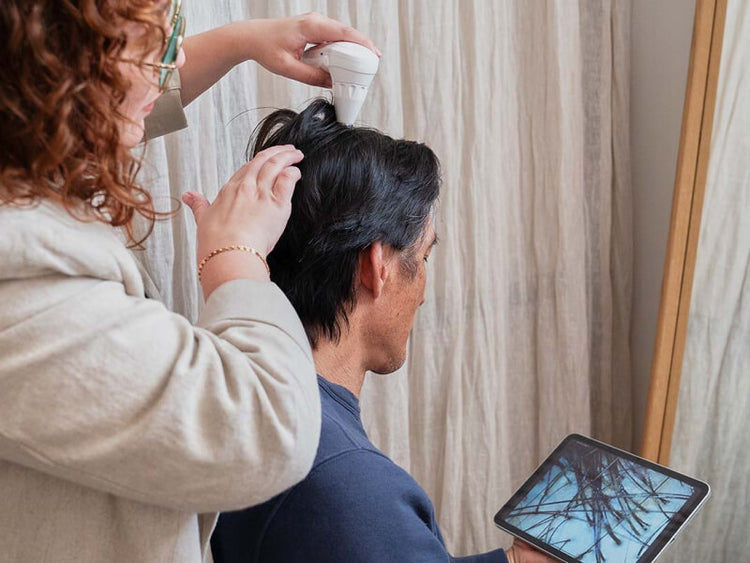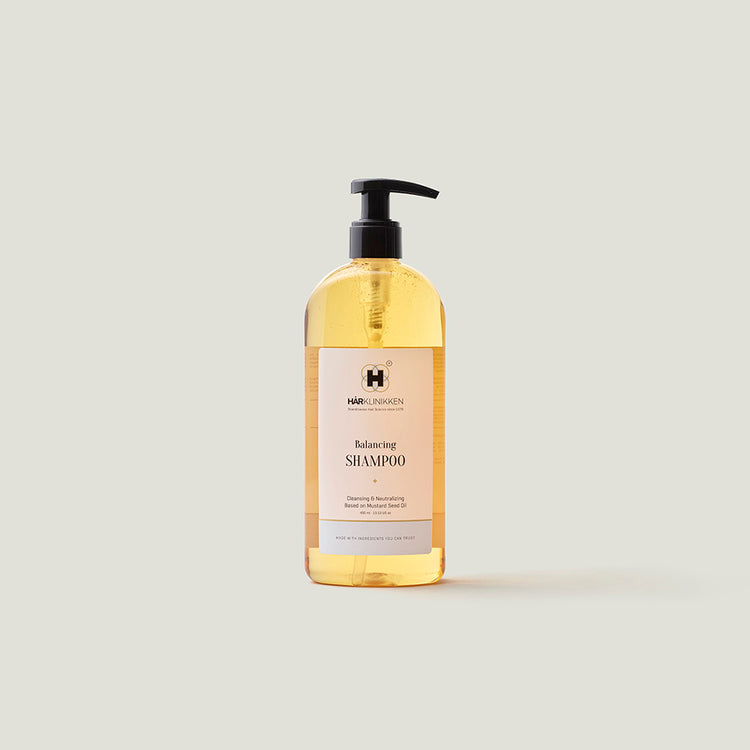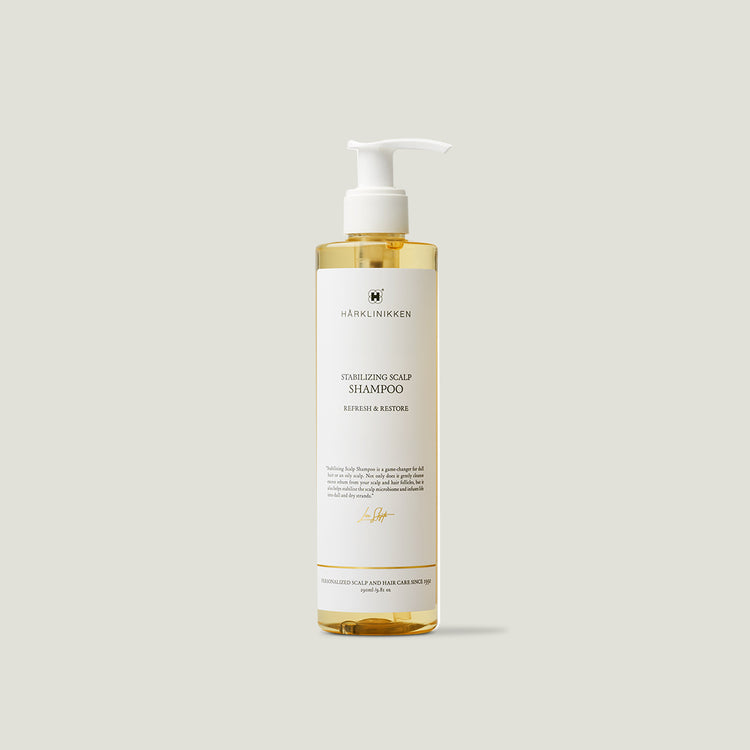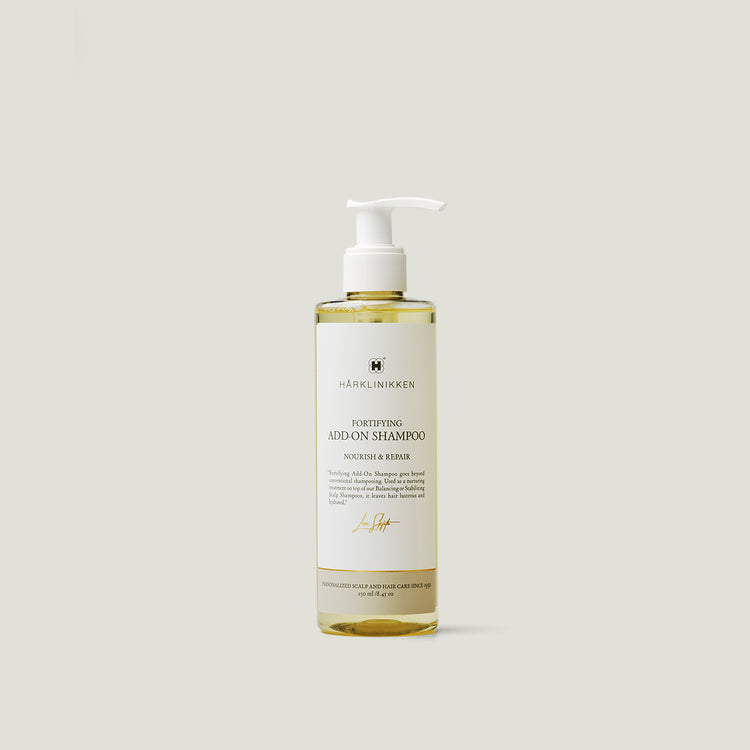We often talk about treating your scalp like the skin on your face, and there’s a good reason for that. Just like your face, your scalp needs to be cleansed, nourished and cared for to function at its best, but the way you care for it needs to suit your body’s unique requirements.
That’s why we’re breaking down what it means to understand your scalp type (like we did with hair types and porosity) to equip you with the information needed to treat it in the most efficient and healthy way possible – and ultimately gain stronger, softer, shinier and healthier hair.
What are scalp types?
When talking about scalp types, we’re referring to its pH balance and sebum (oil) production. The scalp can be oily, dry, normal/balanced or a combination – just like the skin on your face. When it comes to pH balance, that’s the acidity or alkalinity of the scalp microenvironment. Too much or too little acidity on the scalp can lead to fungus and bacteria thriving. Therefore, maintaining your scalp’s ideal pH level can be a balancing act, but it’s worth it.
Does scalp type affect hair type or hair health?
Your scalp type can have a significant influence on the health of your hair. Many people experience increased hair thinning when the scalp environment is unbalanced (either too dry or too oily) for long periods. To optimise conditions for healthier hair, you must optimise scalp health, balance its pH level, and clear away buildup. The better you treat your scalp and hair follicles, the better your chances of good hair quality are.
What factors influence your scalp type?
Your scalp type is influenced by genetics, hormones, and ageing, but there are several things that can also affect the way it functions and its health, including diet, stress levels, climate, and environment. But the most important factor in keeping your scalp healthy is how you take care of it.
Are some scalp types more prone to hair loss and thinning?
When talking about hereditary hair thinning (also called androgenetic hair loss), there isn’t one particular scalp type that’s more prone to hair loss or thinning, but poor scalp care can lead to irritation, dermatitis, and inflammation of hair follicles (folliculitis), which can all result in and exacerbate hair thinning and loss.
Why is it important to know your scalp type?
Adequate care and optimisation of your hair quality comes from understanding your scalp (and hair) type. If you don’t understand it well, you may treat it the wrong way and throw off the scalp’s sensitive microbiome. This results in a less than ideal scalp pH and too much or too little sebum on scalp, which can cause scalp buildup and damage to scalp and hair follicles.
What are the different scalp types?
The four main scalp types are oily, dry, normal, and combination.
Oily Scalp
An oily scalp has an overproduction of sebum. Signs of an oily scalp can be irritation, itchiness, dandruff (yellow-tinted flakes), and acne on the scalp or along the hairline. Often people with an oily scalp will have hair that feels greasy or weighed down quite soon after cleansing.
Dry Scalp
A dry scalp has a lack of sebum production. Signs are often irritation, itchiness, redness, and white flakes. It can also mean your scalp feels tight and dry.
Normal/Balanced Scalp
While we don’t love the word “normal,” what’s considered a normal or balanced scalp type has the ideal amount of oil production to keep the scalp and hair healthy as well as a balanced shift of skin cells from the scalp. Typically, a normal/balanced scalp will have no buildup, flakes, redness or irritation.
Combination Scalp
A combination scalp has the characteristics of both an oily and dry scalp. Some signs can be irritation, redness, and/or inflammation. This scalp type can be challenging to manage because it is often highly sensitive and influenced by various factors such as seasonal changes, chemical treatments, lifestyle and high stress levels.
How does scalp type influence hair?
Scalp type can significantly influence the health and appearance of the hair. An oily scalp often results in hair looking and feeling dull, greasy, and flat, while a dry scalp can lead to hair becoming brittle and lacklustre. A combination scalp typically presents oily at the roots, but the ends feel dry.
How can you identify your scalp type?
To identify your scalp type, find a two-day period that won’t require you to style your hair.
Day 1
In the morning, wash your hair with shampoo and conditioner. Then allow your hair to air dry without any leave-in conditioners or styling products. Throughout the day, try to avoid tying your hair up or touching it too much.
Take note of the following: Does your scalp look or feel greasy not long after washing (perhaps afternoon or early evening)? Has your scalp started to itch? Are there visible flakes?
Day 2
When you get up the following day observe: The state of your scalp and ask yourself those same questions.
If your hair already feels and looks greasy, you probably have an oily scalp.
If your scalp feels itchy and flaky, you might have a dry scalp.
If you have signs of both, you might have a combination scalp.
If your hair doesn’t look oily and your scalp is free of buildup, flakes, redness, and irritation, you might have a normal/balanced scalp.
Caring for different scalp types:
No matter your scalp type, a consistent cleansing routine is integral to maintain good scalp health. For most people, washing every day to every other day with Hårklinikken’s effective but mild shampoos will be sufficient for maintaining a balanced scalp environment. If you feel like that’s too often, just consider how frequently you wash your face.
Oily Scalp Care:
Those with an oily scalp need a deep cleansing with Hårklinikken’s Stabilizing Shampoo to help regulate their high sebum production. This product is formulated in a unique way with constituents derived from our own burdock root extract, with anti-inflammatory properties that can help stabilise and balance excess sebum.
Normal/Balanced Scalp Care:
People with a normal/balanced scalp should cleanse every day or every second day, using the Balancing Shampoo or Stabilizing Shampoo to remove buildup caused by products, pollutants, sebum, dead skin cells, and dirt.
Dry Scalp Care:
Again, cleansing with the Balancing Shampoo every day or every second day will be effective and won’t leave the scalp feeling irritated or tight. Some people with a dry scalp may want to also include Hårklinikken’s Fortifying Shampoo in their routine, for additional care and a boost of hydration.
Combination Scalp Care:
People with combination scalp might need to switch their products but maintain their cleansing frequency to ensure their scalp is balanced. For example, if you notice that your combination scalp is influenced by the season, then a gentle cleansing shampoo (like our Fortifying Shampoo) might be necessary for the colder months, while our Stabilizing Shampoo may be ideal for warmer weather.
If you experience a scalp condition like eczema or psoriasis, we recommend visiting a dermatologist for further diagnosis and treatment.

Unsure where to start?
We only accept candidates who we believe we can help, which is why our online Hair Assessment is the best place to start. Based on your results, you will either qualify for immediate treatment or we will organize a consultation.






